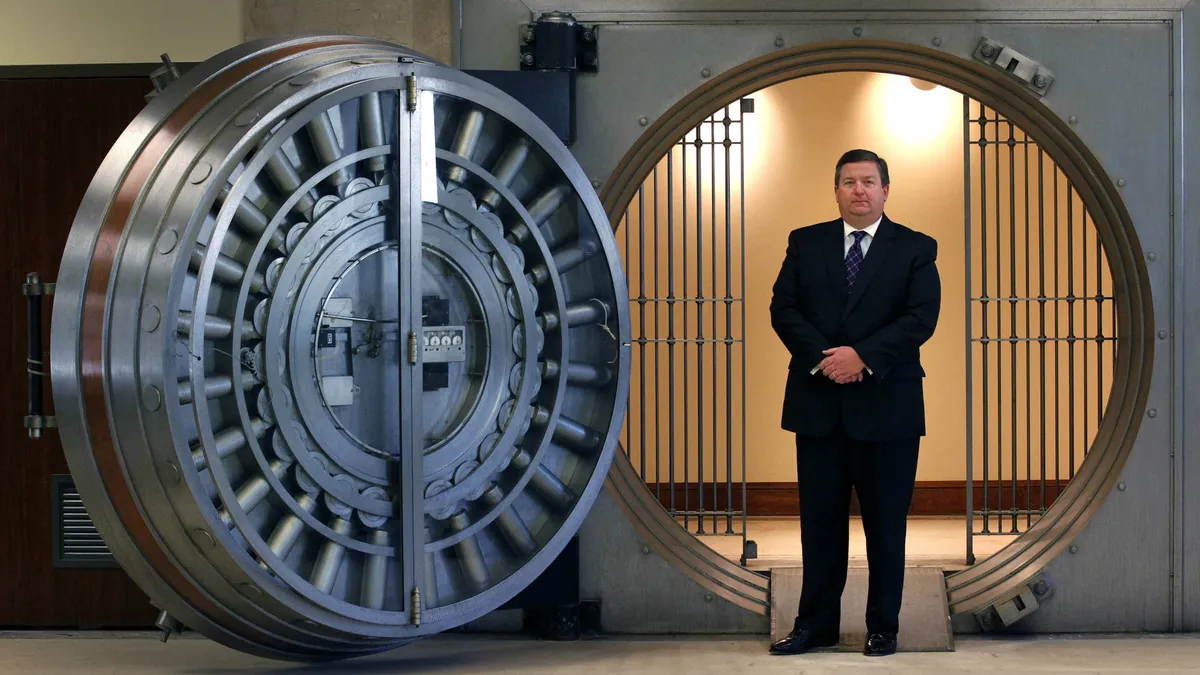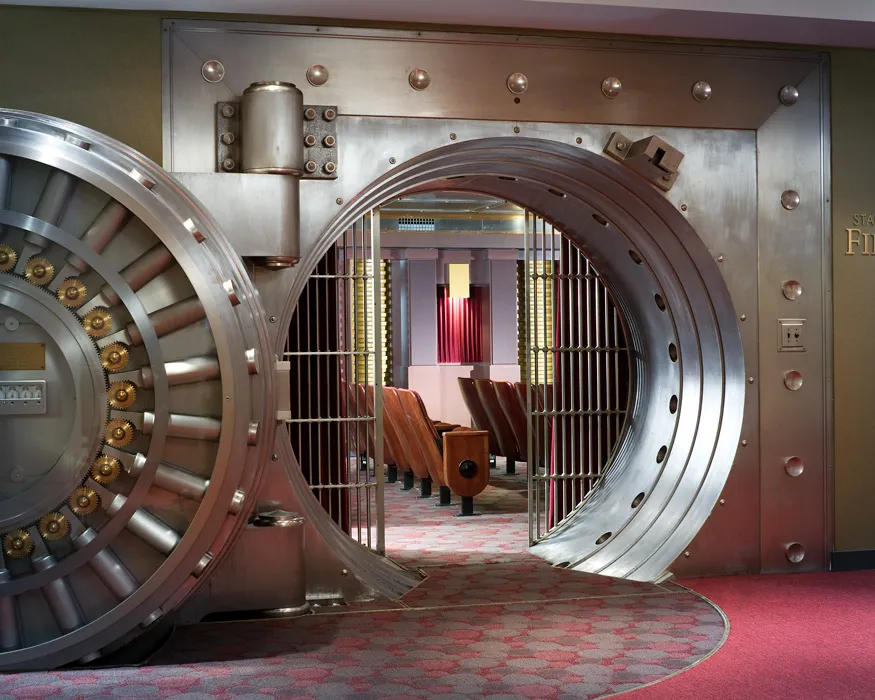Our Vaults' Locations
- Ontario, Canada
- Ottawa, Canada
- Berlin, Germany
- London, England
- Beijing, China
- Dubai, UAE
- Kuala Lumpur, Malaysia
- Cape Town, South Africa
What you need to know about our vaults.

Where are our vaults located?
Our vaults are located in eight cities in four continents as of January 2023 and counting. The vaults are located in secured facilities which are on a need-to-know basis given the security sensitive nature of our business.
Our Vaults
Clutha Vault Incorporated vaults are secure spaces where money, valuables, records, and documents are stored. Our vaults are intended to protect their contents from theft, unauthorized use, fire, natural disasters, and other threats, much like a safe. Unlike safes, vaults are an integral part of the building within which they are built, using armored walls and a tightly fashioned door closed with a complex lock.
Design
Our vaults are built as custom orders. Our vaults are usually the first aspect of what is designed into the buildings in which we locate our premises. The manufacturing process begins with the design of the vault, and the rest of the building is built around it.
Our vaults are typically made with steel-reinforced concrete. This material was not substantially different from that used in construction work. It relies on its immense thickness for strength. An ordinary vault from the middle of the 20th century might have been 18 in (45.72 cm) thick and was quite heavy and difficult to remove or remodel around. Modern vaults are now typically made of modular concrete panels using a special proprietary blend of concrete and additives for extreme strength. The concrete has been engineered for maximum crush resistance. A panel of this material, though only 3 in (7.62 cm) thick, may be up to 10 times as strong as an 18 in-thick (45.72-cm) panel of regular formula concreted.
There are at least two public examples of vaults withstanding a nuclear blast. The most famous is the Teikoku Bank in Hiroshima whose two Mosler Safe Company vaults survived the atomic blast with all contents intact. The bank manager wrote a congratulatory note to Mosler. A second is a vault at the Nevada National Security Site (formerly the Nevada Test Site) in which an above ground Mosler vault was one of many structures specifically constructed to be exposed to an atomic blast in Operation Plumb Bob - Project. Interestingly, our vaults are much more rugged than these two quoted.
Anti-theft Measures
Lock
A vault door, much like the smaller burglary safe door, is secured with numerous massive metal bolts (cylinders) extending from the door into the surrounding frame. Holding those bolts in place is some sort of lock. The lock is invariably mounted on the inside (behind) of the difficult-to-penetrate door and is usually very modest in size and strength, but very difficult to gain access to from the outside. There are many types of lock mechanisms in use:
A combination lock similar in principle to that of a padlock or safe door is very common. This is usually a mechanical device but products incorporating both mechanical and electronic mechanisms are available, making certain safe cracking techniques very difficult.
Some high-end vaults employ a two piece key to be used in conjunction with a combination lock. This key consists of a long stem as well as a short stamp which should be safe guarded separately and joined together to open the vault door.
A dual control (dual custody) combination lock has two dials controlling two locking mechanisms for the door. They are usually configured so that both locks must be dialed open at the same time for the door to be unlocked. No single person is given both combinations, requiring two people to cooperate to open the door. Some doors may be configured so that either dial will unlock the door, trading off increased convenience for lessened security.
A time lock is a clock that prevents the vault's door from opening until a specified number of hours have passed. This is still the "theft proof" lock system that Sargent invented in the late nineteenth century. Such locks are manufactured by only a few companies worldwide. The locking system is supplied to the vault manufacturer preassembled.
Many safe-cracking techniques also apply to the locking mechanism of the vault door. They may be complicated by the sheer thickness and strength of the door and panel.
Door
Our vault doors are molded of special concrete used to make the panels, but it can be made in several ways. The door mold differs from the panel molds because there is a hole for the lock and the door will be clad in stainless steel.
Round vault doors were popular in the early 20th century and are iconic images for a high security. They fell out of favor due to manufacturing complexities, maintenance issues (door sag due to weight) and cost, but a few examples are still available.
A day gate is a second door inside the main vault door frame used for limited vault protection while the main door is open. It is often made of open metal mesh or glass and is intended to keep a casual visitor out rather than to provide true security. We design our doors according to this model.
What is a safe deposit box?
Clutha Safety Boxes
A safe deposit box is a secure container, usually made of metal, that’s used to store valuables at a bank or designated security institute. These boxes are often kept in vaults and can be rented by customers for a fee.
Modern safe deposit boxes have been around since the mid-1800s. Some banks today consider them an outdated service and have stopped offering them. But there’s still a demand for them, and at Clutha Vaults, we fulfil that need.
We have also started offering virtual safe deposit boxes, where customers can securely store digital copies of important documents, such as birth certificates, last wills and tax records.
Average cost of a safe deposit box
The cost depends on the size of the box, and your country and region. Expect to pay as little as $200 a year up to about $450 a year depending on the size of the box. (USD)
The fee increases when you rent a larger safe deposit box. So, if we charge $5 a square inch, a 10-by-10-inch box should cost about $500 a year.
Here is a charge to rent our safe deposit boxes:
Annual cost of safe deposit box Box size
$150-$400 Ranging from 3-by-10 inches to 10-by-10 inches.
$200-$600 Ranging from 3-by-5 inches to 10-by-10 inches.
$300-$750 Ranging from 3-by-5 inches to 10-by-10 inches.
$400-$900 Ranging from 3-by-5 inches to 10-by-15 inches.
$600-$1500 Ranging from 2-by-5 inches to 34-by-16 inches.
What should go in a safe deposit box
Antiques, documents and anything that’s difficult or impossible to replace that isn’t needed on demand could be worth putting in a safe deposit box.
Good things to put in a safe deposit box include:
Personal papers
Stamp or coin collections
Jewelry or rare collectibles
Important contracts and business papers
Keep in mind that we do not limit the number of items you can keep in a safe deposit box, based on their value. The rental agreement will specify restrictions as well, like rules against keeping explosives and illegal drugs in the box you’re renting.
What should not go in a safe deposit box
Avoid storing items you might need on short notice or in an emergency in your safe deposit box. You should also avoid storing items here that aren’t typically needed on short notice but your inability to retrieve them would cause significant problems.
Some examples are:
Passports
Medical directives
Revocable living wills
Emergency cash
Even if the item in a safe deposit box doesn’t typically need to be retrieved quickly, consider how not having ready access to it might be problematic.
Some items, like a medical directive, should never be stored in a safe deposit box because you could become suddenly incapacitated and need important documents right away. Even if there are other parties with access to the box, you are still limited by the need to get to our facility to gain access.
FAQs about safe deposit boxes
The rules for what happens to the contents of a safe deposit box depend on state law or the rental contract with the deceased has with us. McGuinn says. “In most states, the state law says surviving renters have rights of access.”
In some cases, the safe deposit box may be opened after the holder’s death to look for relevant documents, such as a will or life insurance policies. In New York state law, for example, a court may order a safe deposit box to be opened after the holder’s death if it has reason to believe that the box contains a will, deed or insurance policy.
Can third parties gain access to my safe deposit box?
Generally, third parties can’t access your safe deposit box unless you’ve given them authorized access (such as by giving them a key and adding their name to the rental agreement).
If you don’t pay the annual fee for the safe deposit box, it may be classified as abandoned and transferred to the state, in which case law enforcement agencies might be granted access.
What happens if a safe deposit box is abandoned?
If rent isn’t paid on a safe deposit box or it’s deemed abandoned after a specific period of inactivity, we might drill the box and move the contents to our vault.
Eventually, if the contents remain unclaimed, they’ll have to be turned over to the state. Typically, a financial institution will turn over abandoned property after three to five years.
